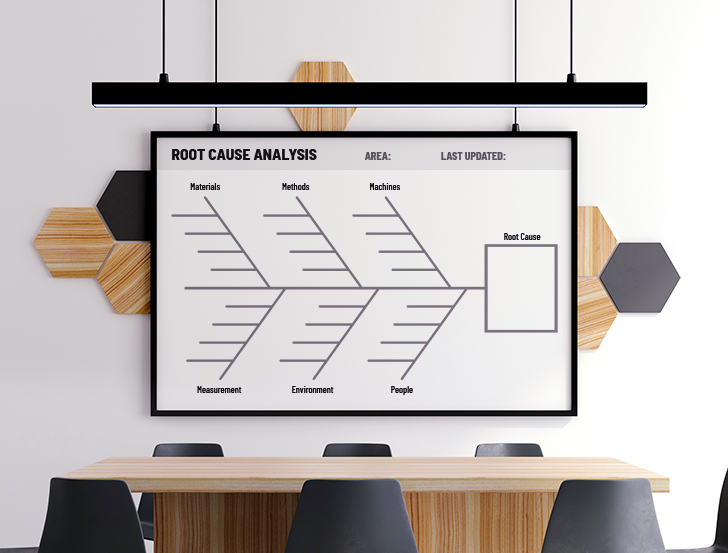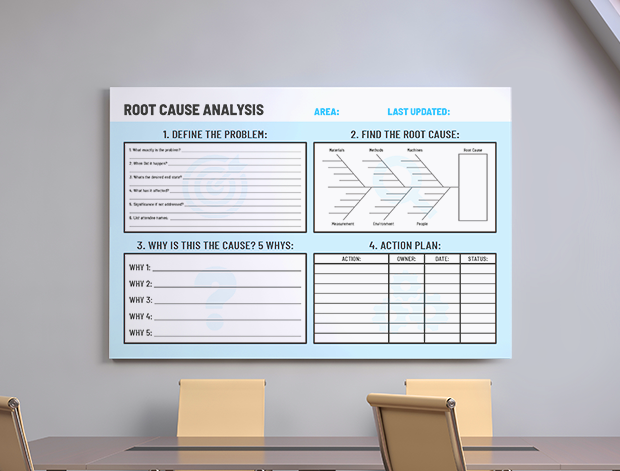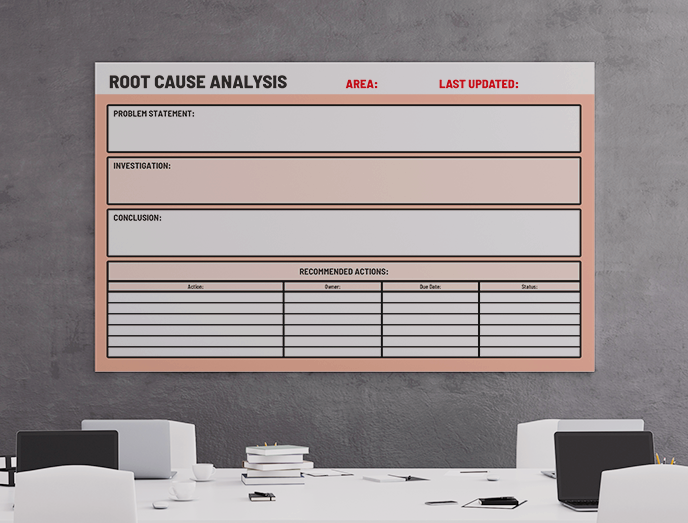02.
Opportunity
Identification
Opportunity Identification is exactly what is says on the tin. It is a way of highlighting and recognising opportunities for improvement of a process. The reason to always be on the lookout for opportunities for improvement is to eliminate any unnecessary steps or wastes that are non-value adding for the customer. It is a way to identify any constraints or bottle necks that might be inhibiting a streamlined flow of the process. Overall opportunity identification is used as a means to optimise a process for maximum efficiency and value.
Where can you source Opportunity Identification?
There are multiple areas where one can source ideas, suggestions and more and these include the following:
Analyses the flow of processes through process mapping or value stream mapping to access whether changes can or should be made.
One of the quickest ways to induce improvement is to simply ask what does the customer really need, value or want? This allows one to simplify the process to its bare essentials as a means to cut out any extra fat.
The employees working on a particular process would have a valuable understanding of how it works, the waste involved and potentially how it could work better.
Use regular Gemba walks to critically look at you processes in action, talk to the people in the frontline and identify waste elimination opportunities.
Re-evaluate critical strategies and retarget existing processes and operations.
The Benefits of Opportunity Identification
Highlights what steps of a process or system can be improved.
Promotes and in-depth understanding of Process operations for employees.
Encourages teamwork and employee buy-in through process co-ordination.
Helps develop the organisational vision with specific values and goals.
Products we suggest
The Ishikawa Fishbone Board
4 Step Root Cause Analysis Board
Basic Root Cause Analysis Board
PDCA Board
The Rule of 5 Board
Narrow down the suspective root cause of an issue by analysing any hiccups in the areas of Materials, Methods, Machines, Measurement, Environment & People.
This Board features a four step Root Cause Analysis Program to help Identify and implement a solution to any issue you might be having.
This Board features a three step Root Cause Analysis Program with recommended actions to help Identify and implement a solution to any issue you might be having.
This board is an important addition to any continuous improvement initiative as it helps your team test any possible resolutions to problems.
The rule of 5 board is an expansion onto the classic problem solving tool "The 5 whys" including 5 why nots as well as 5 Tries.
- The Ishikawa Fishbone Board
- 4 Step Root Cause Analysis Board
- Basic Root Cause Analysis Board
- PDCA Board
- The Rule of 5 Board
Case Study
Value Stream mapping the patient journey through healthcare. A study done in 2010 details the importance of mapping out a process in order to find opportunities for improvement. This study takes place within a UK hospital, where value stream mapping is used to map out the journey of the patient from admission to discharge. The value stream is mapped through a series of steps the patient undergoes according to a specific condition experienced or treatment being used. The NHS has recognised and encourages the practice of process and value mapping to its clinical benefit in adding value to the patient’s experience. The aim of the study is to highlight ways to prevent the issuing of any unnecessary care to patients.
The first step of their value stream mapping is to collect data from multiple sources. These sources include, interpersonal meetings with staff to gather information and become involved, mapping the steps undertaken in a specific treatment group, mapping the physical journey of the patient, following the patients journey real time and finally, retrieving patient feedback.
Through this data collection and visual mapping, it was found that the minimum to maximum amount of time taken for a patients journey was 50 to 345 minutes respectively. Only 13-14 minutes of this time was used to carry out value adding activities. Therefore 4% was value adding and 96% non-value adding. The changes that were needed to be taken were highlighted through this process as reducing patient waiting times, reducing bottlenecks and travelling distances.
Through the strategy of data collection, the hospital team involved in this study had a visual representation of the patients journey that they could manipulate and change in order to restructure the pathways and steps used, to pursue the most effective and value adding use of time.
The benefits of this approach are
- Broader and deeper understanding of the process across departments and team members.
- Clear focus on the overall goal of customer value rather than local optimisation.
- Measurable base line to set targets for improvement.
- Development of ‘Next Steps’ and ‘Future State’ visions.
- Breaks down resistance to change.
Reference:
Trebble TM, Hansi N, Hydes T, Smith MA, Baker M. Process mapping the patient journey: An introduction. BMJ. 2010;341:c4078. doi: 10.1136/bmj.c4078.




